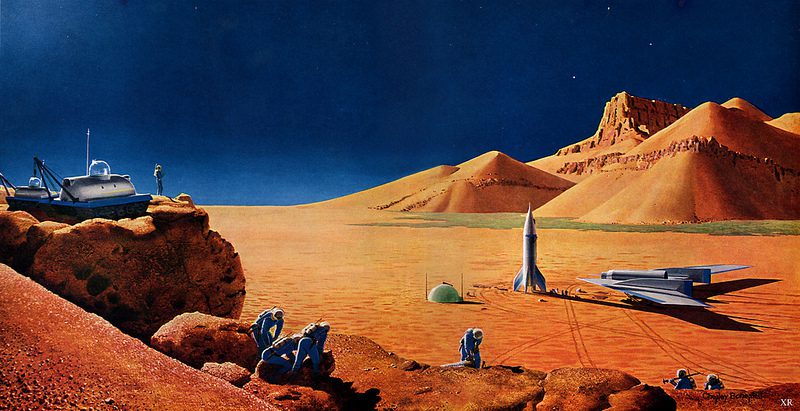Too many movies, TV shows, novels and comics imagine how life on another planet could be possible for humans. But relocating earthlings to another spot in the universe, and engaging in planet colonization is an enormous undertaking that will require huge advancements in technology, heaps of capital and innovative thinking.
A range of factors need to be assessed and resolved for travel through space and the subsequent building of infrastructure to sustain life and society. Here are the who, what, when, where and why that need to be considered in order for us to colonze space, and set up shop beyond the safety of planet Earth:
Who?
To establish a sustainable and functional settlement on a new planet, an estimated 20 to 40 thousand people are required. Cameron Smith, an anthropologist at Portland State University, outlined that a large number of people are needed to ensure genetic and demographic range. This will provide the interstellar colony the best chance of survival long term.
The cost to make space colonization and settlement happen is extremely high. The price tag to send a single one person for a short time into orbit is about $30 million. To make mass space travel feasible, this cost would need to be substantially reduced. NASA estimates the rate would need to fall to between $1,000 and $10,000 to make it possible for the middle class to consider signing on.
Where?

Mars and some of the moons of Jupiter and Neptune are all places in which colonization may be possible. These moons are among the group of over 50 space locations that are believed to be hospitable to earthlings, known as goldilocks planets. These planets, like Earth, can sustain life because they’re an appropriate distance from the Sun.
Any planet considered for colonization needs to be protected from the sun’s solar radiation. It also needs to have an atmosphere to insulate the planet from the cold of space – which means rogue planets may be a difficult option. The planet should ideally also have the right chemicals for life — these include water and carbon.
Some of the habitable planets don’t have all of these features, but their surface is consistent enough that humans could set-up biospheres where the air we breathe, the water we drink andthe food we grow and eat can be maintained.
Recently, a group of Australian astronomers discovered a star that might work. It’s a red dwarf star called Wolf 1061 and is 14 light years away from us here on Earth.
When can we Achieve Planet Colonization?

Our technology cannot yet make such ventures possible. It’s hard to say when space colonization will fall within our grasp. President Obama declared that the U.S. plans to send manned missions to a near-Earth asteroid by 2025 and Mars by the mid-2030s.
The majority of progress toward space settlement is being made by the private sector. A successful test flight of a reusable space capsule has been completed by Elon Musk’s SpaceX.
Related: How We Will Colonize Mars
Other companies, including Virgin Galactic and Space Adventures, provide low Earth orbit flights and overnights at space stations. An inflatable space hotel is being planned by Bigelow Aerospace.
How can we achieve planet colonization?
The Earth is a very special place, and that’s putting it mildy — it has the right climate for humans to survive, the water we need to drink and the oxygen we need to breathe. To make another planet sustain life (at least as we know it), we’re going to need these elements as a bare minimum requirement.
For colonizing other areas, large-scale life support systems would be needed to maintain living conditions for humans — created through a process known as terraforming. This is will be possible inside an enclosed biosphere, which must be made of durable and robust materials. These locales will enable humans to grow food and sustain life. Until a colony is self-sustaining, it might rely on food supplies sent from Earth.
Why should we explore planet colonization?
The reasons are obvious if you think about it. Famed physicist Stephen Hawking has outlined the need for planet colonization multiple times. Space colonization will ensure the future of our species, especially when armed conflicts all over the planet could lead to our downfall.
It’s vital that when settling on new lands (or a new planet), we aren’t seizing it from another group. Imagining what is beyond our blue sky has been a preoccupation of humans for centuries. In the last century, investigating it has become a reality. Perhaps in the next century, we’ll find a way to live in beyond it as well.
